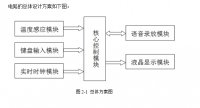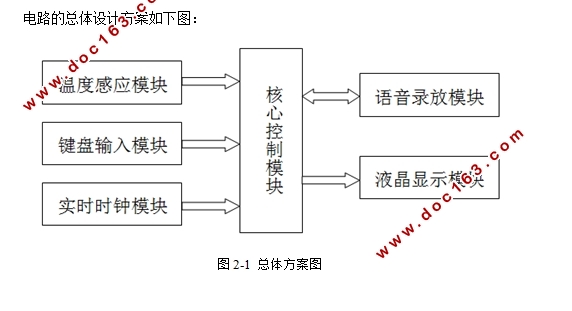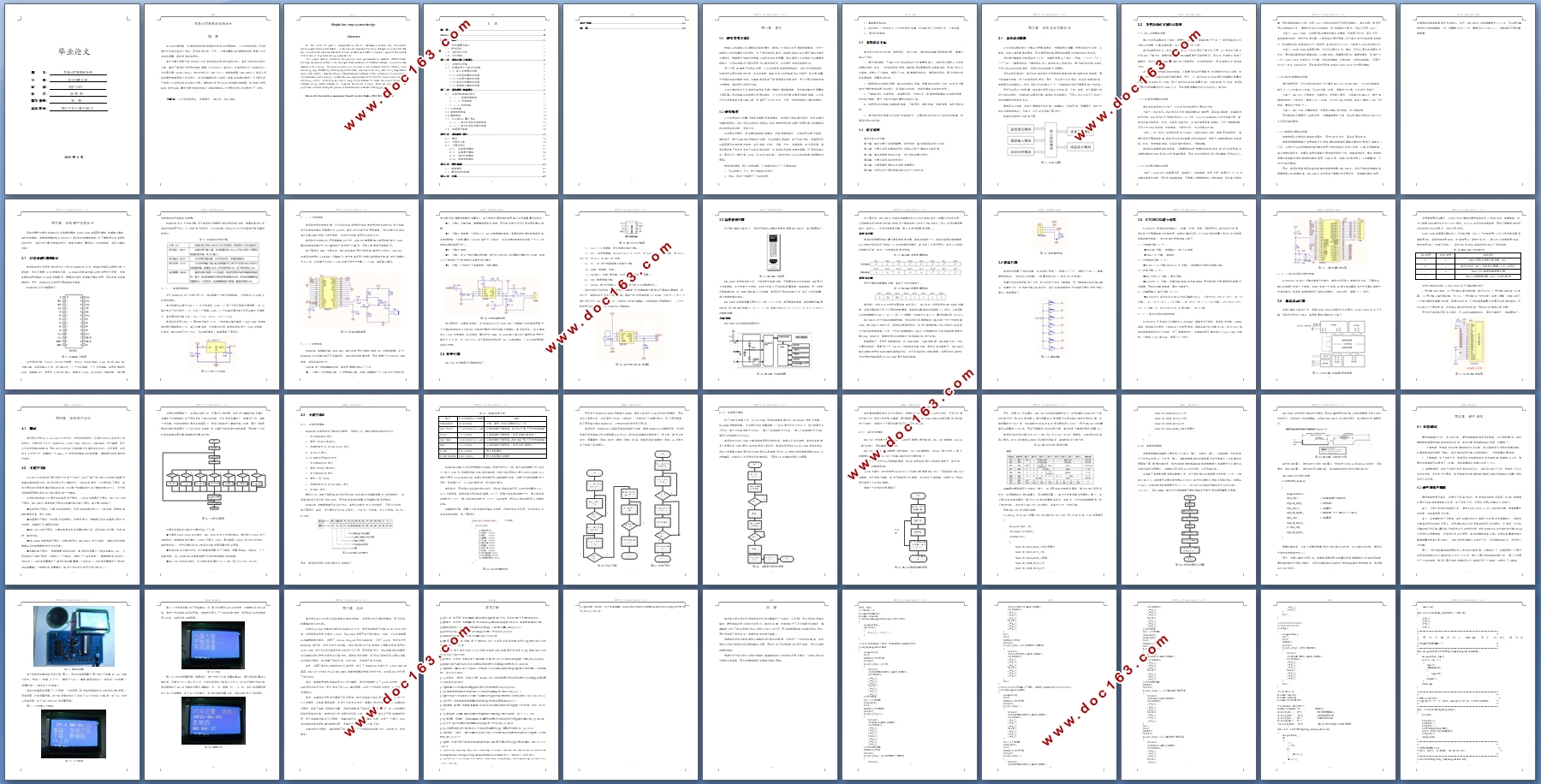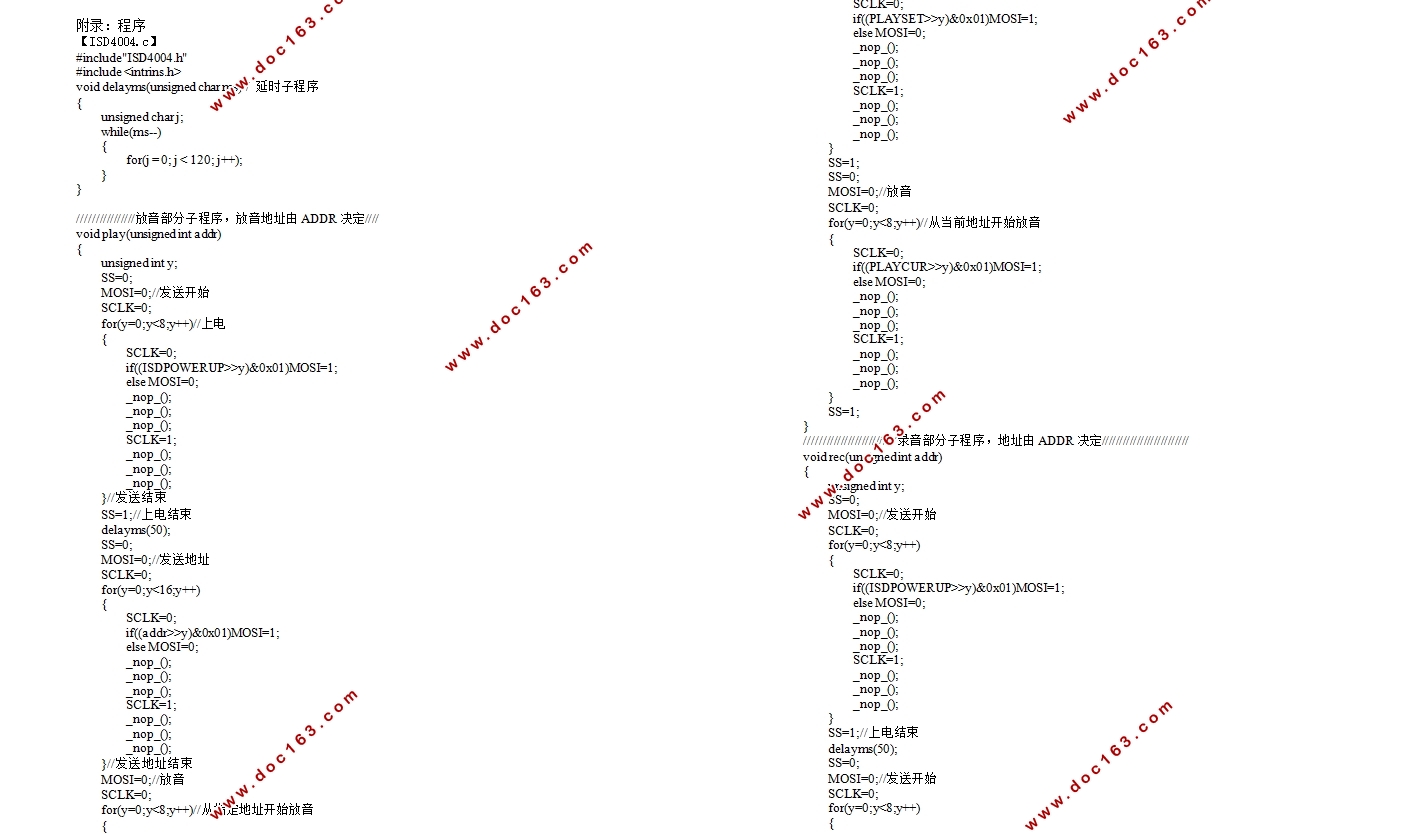简易公交车报站系统设计

简易公交车报站系统设计(任务书,开题报告,外文翻译,论文17700字)
摘 要
在公共交通领域,车载信息系统越来越成为未来的发展趋势。公交车报站系统不仅能通过文字和语音进行报站,而且能和时间、天气、交通流量等实时数据连接来提高公交车的服务质量,具有很强的实用性。
本文主要介绍基于单片机的公交车报站系统的原理及实现方法。首先分析总体的设计方案,确定了本系统所采用的微处理器(STC89C52单片机)、语音录放芯片(ISD4004)、文字显示器(LCD12864)、实时时钟芯片(DS1302)、温度传感器(DS18B20)。然后从系统的硬件电路原理分析及设计,和软件编程的设计实现、电路的搭建与调试几个方面介绍了简易公交车报站系统的设计过程。硬件部分采用Protel软件画出电路图;软件部分采用KEIL软件完成。最后对硬件和软件部分的联合调试以及过程中出现的问题进行了说明。
关键词:公交车语音报站 液晶显示 DS1302 DS18B20
Simple bus stop system design
Abstract
In the field of public transportation, vehicle information system has become the development trend in the future, it can not only announce bus stop through voice and text but also connect with real-time data such as time, weather and traffic volume to improves the quality of bus service. It posseses strong practicability.
This paper mainly introduces the principle and implementation method of MCU-based bus stop announcer system. First, through demonstrations of different schemes, conclusion has reached as following: the microprocessor will be used in our system(STC89C52 MCU), voice recording chip (ISD4004), text display(LCD12864), real time clock chip (DS1302), temperature sensor (DS18B20). Then the design of hardware and software of the system will be described. The hardware circuit mainly includes the minimum system of STC89C52 microcontroller, voice recording circuit, LCD display circuit, using Protel software to draw the circuit diagram; the software using KEIL software to complete the review. Finally, there are explains of the problems occurred during the process of hardware and software’s debugging.
Keywords: bus station announcer; liquid crystal display; DS1302; DS18B20
[资料来源:http://Doc163.com]



目 录
摘 要 Ⅰ
Abstract II
第一章 绪论 1
1.1 研究背景及意义 1
1.2 研究现状 1
1.3 系统设计目标 2
1.4 论文结构 2
第二章 系统总体方案设计 4
2.1 总体设计思路 4
2.2 各模块设计方案对比选择 5
2.2.1核心处理器的选择 5
2.2.2语音录放模块的选择 5
2.2.3文字显示模块的选择 6
2.2.4实时时钟模块的选择 7
2.2.5温度感应模块的选择 7
第三章 系统硬件电路设计 9
3.1 语音录放电路的设计 9
3.1.1 电源转换电路 11
3.1.2 录音电路 11
3.1.3功放电路 12
3.2 时钟电路 13
3.3温度传感电路 15
3.4键盘电路 18
3.5 STC89C52最小系统 19
3.5.1单片机系统的振荡电路 22
3.5.2单片机系统的复位电路 23
3.6 液晶显示电路 24
第四章 系统软件设计 29
4.1 概述 29
4.2 主程序方案 29
4.3 子程序设计 31
4.3.1 语音录放模块 31
4.3.2 液晶显示模块 34
4.3.3 实时时钟模块 37
4.3.4 温度传感模块 39
第五章 硬件调试 42
5.1 焊接调试 42
5.2 硬件和软件联调 42
第六章 总结 45
参考文献 46
致 谢 48
[资料来源:http://www.doc163.com]
